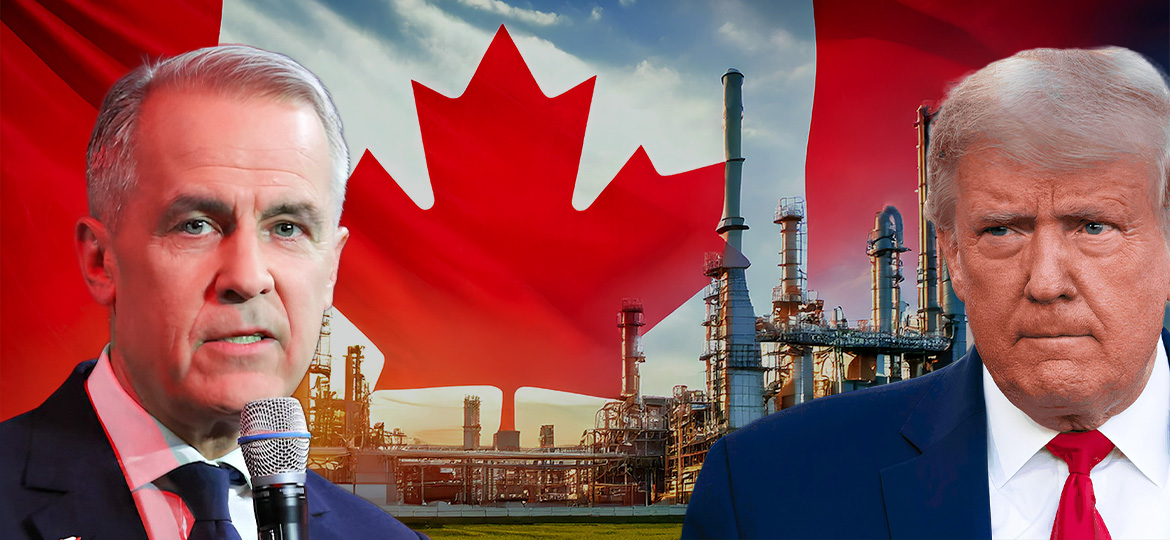As promised during his re-election campaign, President Trump has started imposing tariffs on America’s trading partners, such as Canada and Mexico. The recent tariff is the 25% imposed on all steel and aluminum imports coming into the US. Any economist or business lawyer will tell you that these tariffs will have cascading effects on both the US and Canadian economies, and they will affect many businesses, either directly or indirectly. They will also hurt the end consumer, who will have to bear the increase in prices from these tariffs.
So, what is a tariff?
A tariff is essentially a form of tax imposed by the government of the importing country on any product entering their market. This additional tax is generally added on to the price of the product, initially paid by the company importing it from abroad and eventually passed on to the consumers.
What is a protective tariff?
A protective tariff is an additional tax imposed on a product specifically to encourage the growth of the domestic industry. The rationale is to drive up the prices of the imported products, forcing the customers to switch to an alternative from the domestic producers. The expectation is that this will lead to the growth of domestic industries and job creation at home.
What is a cumulative tariff?
One of the big worries for businesses on either side of the border recently is the cumulative effect of President Trump’s various tariffs. A cumulative tariff is essentially multiple tariffs adding up on the same product, leading to a huge increase in prices. For example, President Trump’s 25% tariffs on steel and aluminum, automobiles, and automobile components can all stack up on the same product, leading to a total of 75% or higher tariff.
Are tariffs applied to a product every time it crosses the border?
Yes. This is why many car manufacturers are worried about the effect of these tariffs on the final price of their products. For example, it is very common for automobile makers to source the components from different locations and assemble them in a factory located in a country where labour is the cheapest. This sometimes creates situations where automobile parts cross the borders between Canada, the United States, and Mexico multiple times before finally reaching the market in the US for sale.
What is involved in Trump’s tariffs for Canada?
Trump had campaigned on the promise of raising revenue by imposing tariffs on America’s major trading partners, including Canada. After delaying the tariffs a couple of times, the Trump administration has finally decided to move ahead with them.
Already imposed tariffs
As of now, President Trump has authorized the imposition of a 25% tariff on steel, aluminum, and a slew of other metal products imported from Canada. This can affect all manner of products and goods, including automobiles, household appliances and soda cans.
Tariffs currently on hold
Trump had initially announced a tariff of 25% on all imports from Canada and Mexico and another 10% tariff on potash, oil, and gas imports. These are on hold till April. Also, another 25% tariff on imported automobiles and automobile components was announced, which might take effect in April. As mentioned above, these tariffs can be cumulative in nature, taking the total tariff burden to 75% in some cases.
Reciprocal country-specific tariffs
President Trump’s administration has been very bullish on tariffs. Trump has also promised to impose reciprocal tariffs on countries engaging in unfair trade practices, and Canada is among the list of countries that will be affected here as well.
How is Canada responding to Trump’s tariffs?
The initial decision by President Trump to put most of the announced tariffs on hold had prompted speculation that these tariffs might just be a negotiating tactic. However, with the US now going ahead with a 25% tariff on steel and aluminum goods, which came into effect on March 12th, the Canadian government had no choice but to respond.
25% counter-tariffs in the first phase
Canada has imposed counter-tariffs of 25% on $30 billion worth of goods imported from the US. The broad list of items coming under the first phase of tariffs includes coffee, motorcycles, cosmetics, orange juice, appliances, and wine.
Expanding the counter-tariffs to more goods in the second phase
In the second phase, this list will be further expanded to cover $155 billion worth of goods, including beef, fruits and vegetables, dairy, aluminum and steel products, and trucks and passenger vehicles.

What are the possible short-term impacts of these tariffs?
Initial absorption of costs by the businesses
While the situation remains fluid between Canada and the US, with the possibility of settling the matter through negotiations, some businesses might choose to absorb the tariffs rather than pass them down to the consumers. This will obviously increase their cost burden and reduce their competitiveness in the marketplace.
Passing the cost to the consumer, leading to higher inflation.
However, if the issue is not resolved quickly, the companies will have no choice but to pass the additional cost to the end consumers. This will have a cascading effect on the market, affecting the prices of multiple goods and services across the board. Obviously, the result will be a higher rate of inflation on both sides of the border.
Drop in US goods and diversification of products
The higher prices will force the consumers and the sellers to look for alternatives to the US goods currently flooding the Canadian market. The focus should be on reducing the dependency on the US for various goods that Canadians use every day, such as coffee and alcohol.
Supply chain issues in sourcing raw materials
Since every time a raw material or a component crosses the border, it attracts a 25% tariff, there will be a lot of disruptions in supply chains. The producers will have to look for alternate sources of raw materials and components either from within Canada or from another country where such hefty tariffs are not imposed.
Effects on the job market
Freeze on all hirings
The extra financial burden on the manufacturers and sellers will force them to implement cost-cutting measures. They will be forced to put on hold all their expansion and hiring plans.
Possible layoffs
If the tariffs are not removed, many manufacturers and sellers will soon start to see some losses. They will have to tighten their belts, and this might include reducing the workforce and even shutting down some factories in certain areas.
Rise in unemployment
The prolonged impact of these tariffs will lead to a rise in the unemployment rate on both sides of the border. With companies trying to cut down their costs to adjust to the high tariffs on their products, the job market might not pick up, at least for a while.
Government support
Unemployment aid: The government will have to intervene, at least temporarily, to steady some of the turbulence in the job market by making more provisions for unemployment benefits to citizens rendered jobless.
Tax relief: To balance out the unfair and negative impact of these arbitrary tariffs on certain industries, the government will have to offer tax relief at least until they find alternative markets for their products.
Financial aid: It might be difficult for certain industries to survive without significant financial aid and support from the government.
What are the possible long-term impacts?
Decrease in GDP
Any trade war between the two countries will have a negative impact on both countries. Over the decades, Canada and the US have built up highly integrated supply chains for various industries. Disrupting them and assuming that they could be easily substituted with domestic alternatives is easier said than done. Economists have already warned that instead of a reduction in the trade deficit, these tariffs could have a negative impact on the GDP and might even trigger a recession.
New trade policies
These tariffs have managed to change the trade relationship between Canada and the US, at least for the foreseeable future. This will force the Canadian government to implement trade policies to protect our economy and industries from such unfair trade practices in future.
Trade diversification
It has become essential for the Canadian economy not to become too dependent on trade with a single country. Obviously, the main reason for the high volume of trade with the US is the shared border between the two countries. Canada must look beyond the US and establish diversified trade partnerships with the nations in the European Union, Asia and Africa.
Decline and innovation across various industries
Once the dust settles, some businesses will have adapted to the new reality through innovation, while some others might go into a state of permanent decline from which they might never recover.
How can our business lawyer help you in such cases?
The next few weeks and months are going to be crucial, and you need to take all legal measures to protect your business from the market turbulence. You need to get in touch with an experienced business lawyer to work out a strategy that will meet the particular needs and circumstances of your business and protect it from the short-term and long-term impacts of these tariffs. Protect your business today by reaching out to our team of corporate lawyers at 905-405-0199 for a consultation.







